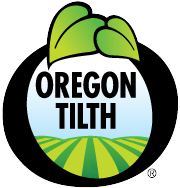OVERVIEW
For the non-farmer, soil is easy to take for granted. It’s awfully hard to remember that soil is a living thing. And, at first glance there doesn’t appear to be an obvious link between the brown stuff under our feet and our big environmental issues.
But it all starts in a little dirt. Whether it is neutralizing greenhouse gases or conserving more water organic farming methods prove time after time that healthy landscapes can lessen and even eliminate threats to our natural resources and ourselves.
The Challenge
In 2012, TIME magazine asked the question: “What if the world’s soil runs out?”
Our footprint for agriculture is shrinking. Recent estimates project we might have as little as 60 years of farmable soil left and each day we lose more grasslands, forests and savannas with agriculture’s expansion to find healthy places to grow crops.
Meanwhile, rates of soil loss are on the rise. And when soil is lost through erosion it can carry a dangerous mix of debris, fertilizers and pesticides into lakes and rivers, making them unsafe for wildlife and for people. And at the other end of the extreme, some of our most productive agricultural regions are facing water shortages from increasing drought. With agriculture using more than 70 percent of our world’s freshwater, far too much is wasted in worn-out soils through runoff and poor retention.
Investing in soil health is a long-term approach to agriculture’s sustainability; and in a culture of now-ness, we need more than ever to relearn how to be stewards of our future.
The Opportunity
Fortunately, there are simple solutions to renew our soil. With organic certification, farmers follow practices that add organic matter, increase water holding capacity and keep farmland productive for the future.
Research shows that organically managed farm systems lead to long-term payoffs for growers. Cover crops not only add much needed organic bulk back into a constantly retreating landscape, but also fix nutrients to soil and encourage an abundance of essential microorganisms. Organic farmers strongly believe in caring for their “soil livestock” as part of an overall approach that values the importance of soil ecosystem biology as integral to healthy farmlands. Building the quality and quantity of soil matter also improves the capacity for water to be held in place, increasing the amount available for plants to uptake when needed most. These kinds of basic practices found in certified organic operations can increase the role of soil as a vanguard to sequester carbon. In short, organic soil can help us keep more carbon out of the atmosphere; it gives us another tool in our fight against climate change.
But more needs to be done. With healthy soil in short supply and more volatile weather in the form of floods threatening to contaminate our waterways with agricultural runoff, we need to transition more farms to sustainable land management practices, quickly. Our partnerships with Oregon State University and the Natural Resources Conservation Service have made notable progress. Despite these encouraging results, we must increase investment in saving our soil through education, outreach and technical support.
